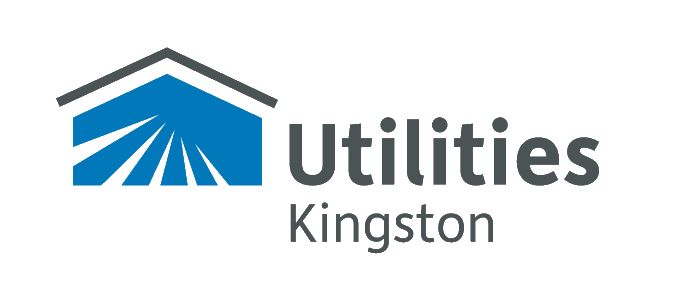2017 Achievements
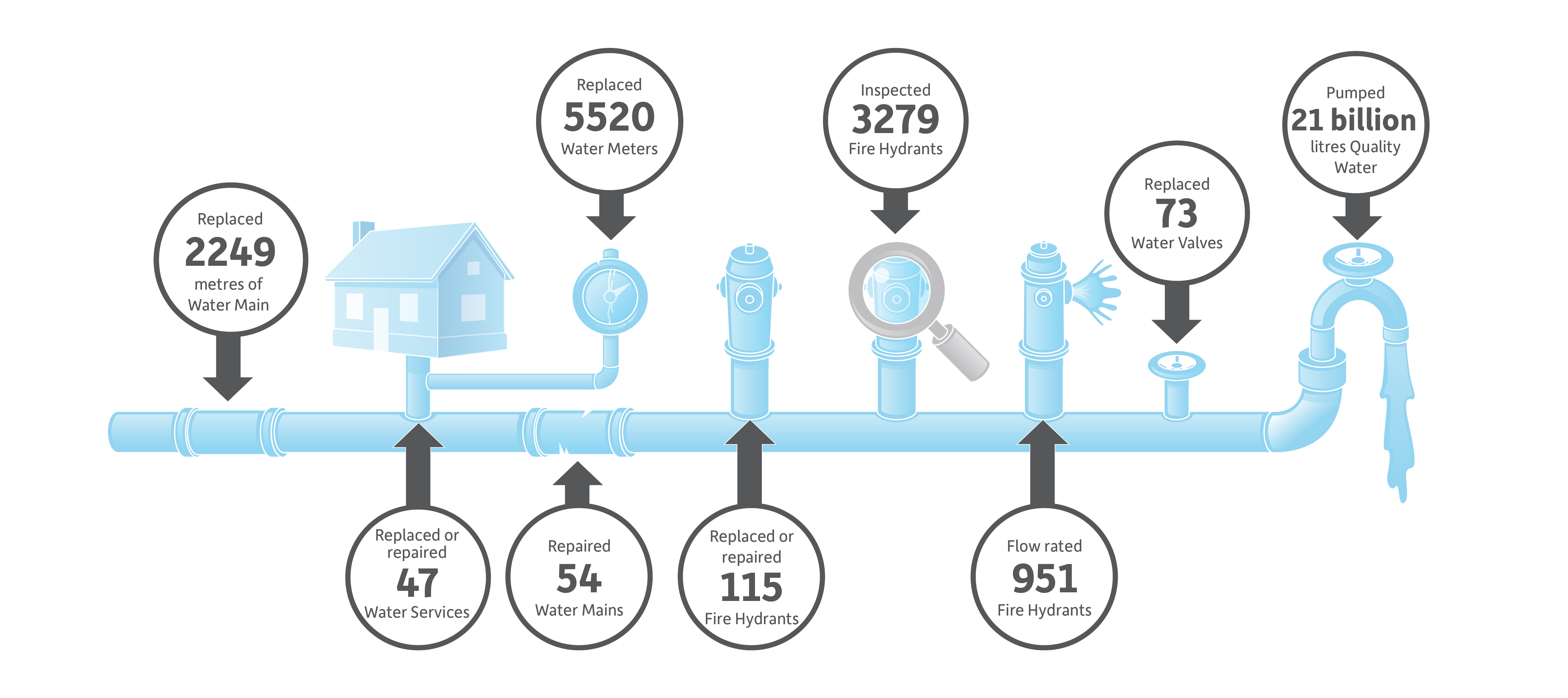 Click to enlarge
Click to enlarge
What's the context?
We've provided data on our achievements in 2017. If you're looking for additional context on how much overall infrastructure we maintain, check out our overview infographics.
Over Five Thousand Water Meters Replaced
In 2017, we continued to improve asset management of water meters as we replaced 5,520 out of approximately 38,000 water meters. This program will help us keep meters up-to-date to ensure accurate, reliable metering of the water consumed by our customers.
Ensuring Reliable Water Distribution and Fire Protection
3,279
Fire Hydrants Inspected
Out of 3,401
951
Fire Hydrants
Flow Rated
In 2017, there was a focus on water distribution system maintenance that included valve operation and maintenance, hydrant inspection and maintenance, and water service renewal.
To help support fire protection, a particular focus was placed on inspecting and flow rating fire hydrants. We inspected all fire hydrants, except those that were inaccessible, for example, due to construction.
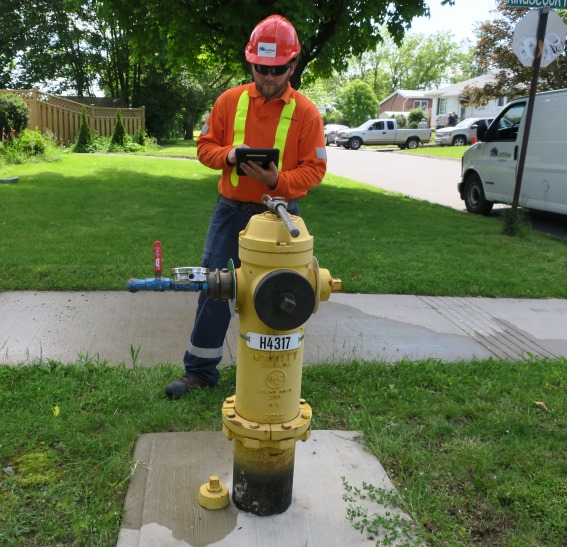
Automated field data collection for the fire hydrant inspection program: a summer student collects data using the location-based application Collector for ArcGIS . Reducing paper trail and increasing productivity by digitizing processes!
Expansions Complete! Point Pleasant Water Treatment Plant
In 2017, we held a ribbon-cutting and facility tour to celebrate the completion of a $50 million upgrade to the Point Pleasant Water Treatment Plant. This work has increased the plant’s capacity from 45 million litres per day to 80 million litres per day and includes:
- New filters, high lift pumping station and chlorination facility for increased plant capacity
- New instrumentation and controls, which improve our ability to monitor water quality
- Process improvements for more efficient operation of the facility
- Additional on-site storage and an enhanced maintenance facility
Neat to know: Our in-house experts have built a solution to control and monitor the plant so that our certified operators have the tools and systems to ensure a safe, reliable supply of drinking water to our community. This ‘made in Kingston’ technology is unlike any other in Canada, as it has been optimized for our local needs.
This upgrade to community infrastructure supports Kingston’s future growth and economic development.
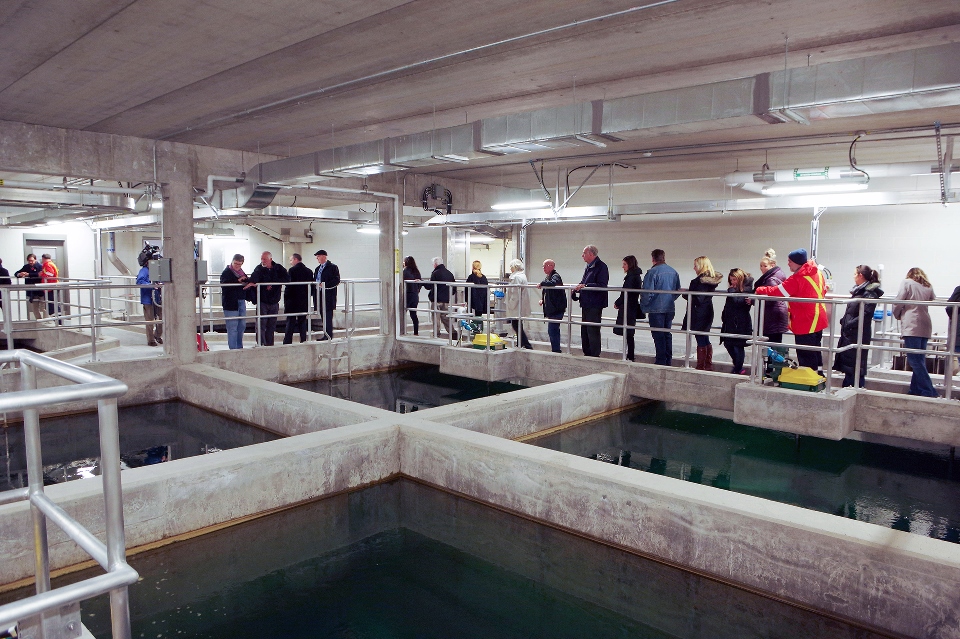
Engineering Condition Assessment: City’s Oldest In-Service Water Tower
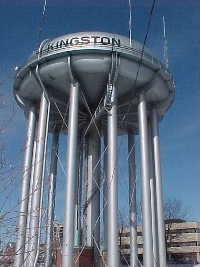
In 2017, we completed an engineering condition assessment on this 60-year-old critical drinking water infrastructure. This included a thorough review of structural elements, current code compliance, foundations, and coatings. In general, the tower was found to be in good condition and structurally sound. In order to protect the steel from corroding, we identified the need to remove and replace the exterior paint in 2018.
James Street Water Booster Station Upgrades
Upgrades to the James Street Booster Station are nearly complete, with landscaping work to be completed in Spring 2018.
This booster station conveys water to the system east of the Cataraqui River and is located in the Barriefield Heritage Conservation District. The upgrades are needed to replace aging infrastructure and ensure adequate supply of water for the East Water System. The upgraded facility will accommodate 20-year population growth projections.
The upgrades include a building extension to house new pumps, electrical equipment and other associated infrastructure. There were also minor alterations made to the underground infrastructure outside the building, along with a new standby power generator to ensure continued reliability of the water supply in the event of a power outage.
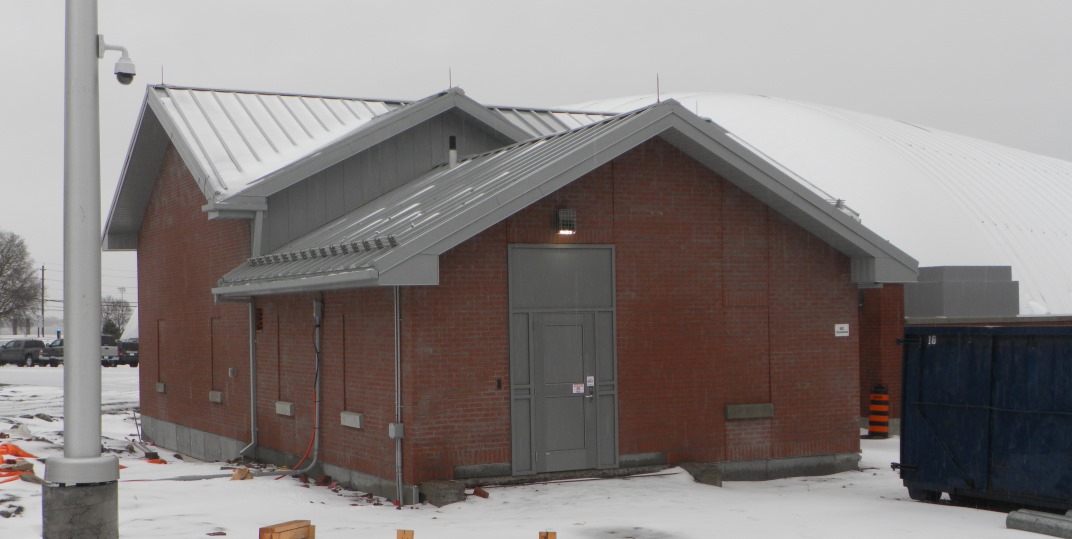
As part of the upgrades, the entire building exterior is new, including roofing, brick veneer, doors and a building addition.
Regulation and Legislation
Annual Reports on Drinking Water Quality
Utilities Kingston released the 2017 annual reports on drinking water quality in accordance with Section 11 of Ontario Regulation 170/03. Annual reports outline water quality status at the three water treatment facilities and the water distribution systems operated by Utilities Kingston.
In 2017, we received a 99.59 per cent rating from the Ministry of the Environment and Climate Change on our drinking water inspections, which confirms we are meeting the water quality standards.
Our activities to ensure water quality included the following:
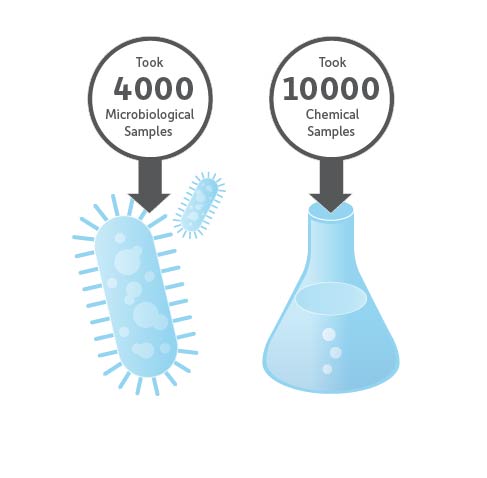
Cross Connection Control
As of 2017, Utilities Kingston monitors the annual testing and maintenance of nearly 3,000 approved backflow prevention devices, up from 2,500 devices in 2016. These devices are mostly for premises isolation, and some internal protection and residential irrigation. In 2017, approximately 500 new devices were installed in industrial, commercial, institutional (ICI) and multi-residential buildings.
The program was first implemented in Kingston in 2012. Since then, nearly half of the approximately 4,000 ICI facilities identified have put premises isolation backflow prevention devices in place, or have a survey pending. We initially focused on the most severe-hazard connections like hospitals, car washes, morgues and dental offices. These facilities now all have premises isolation in place and we continue to work with moderate-hazard connections such as restaurants, stores, offices and multi-residential buildings.
Background
In accordance with the Water By-law No. 2006-122 Part 3 - Cross Connections/Backflow Prevention, the Utilities Kingston Cross Connection Control Program is in effect. It addresses actual or potential connections between the City’s water infrastructure and a source of pollution or contamination that could change the drinking water supply quality.
Through this program, we identify moderate- and severe-hazard cross connections, where potential contamination of potable water may occur, and we enforce installation and yearly testing of backflow prevention devices. When properly installed, cross connection control devices ensure that water will never flow from the customer’s facilities into the distribution system.
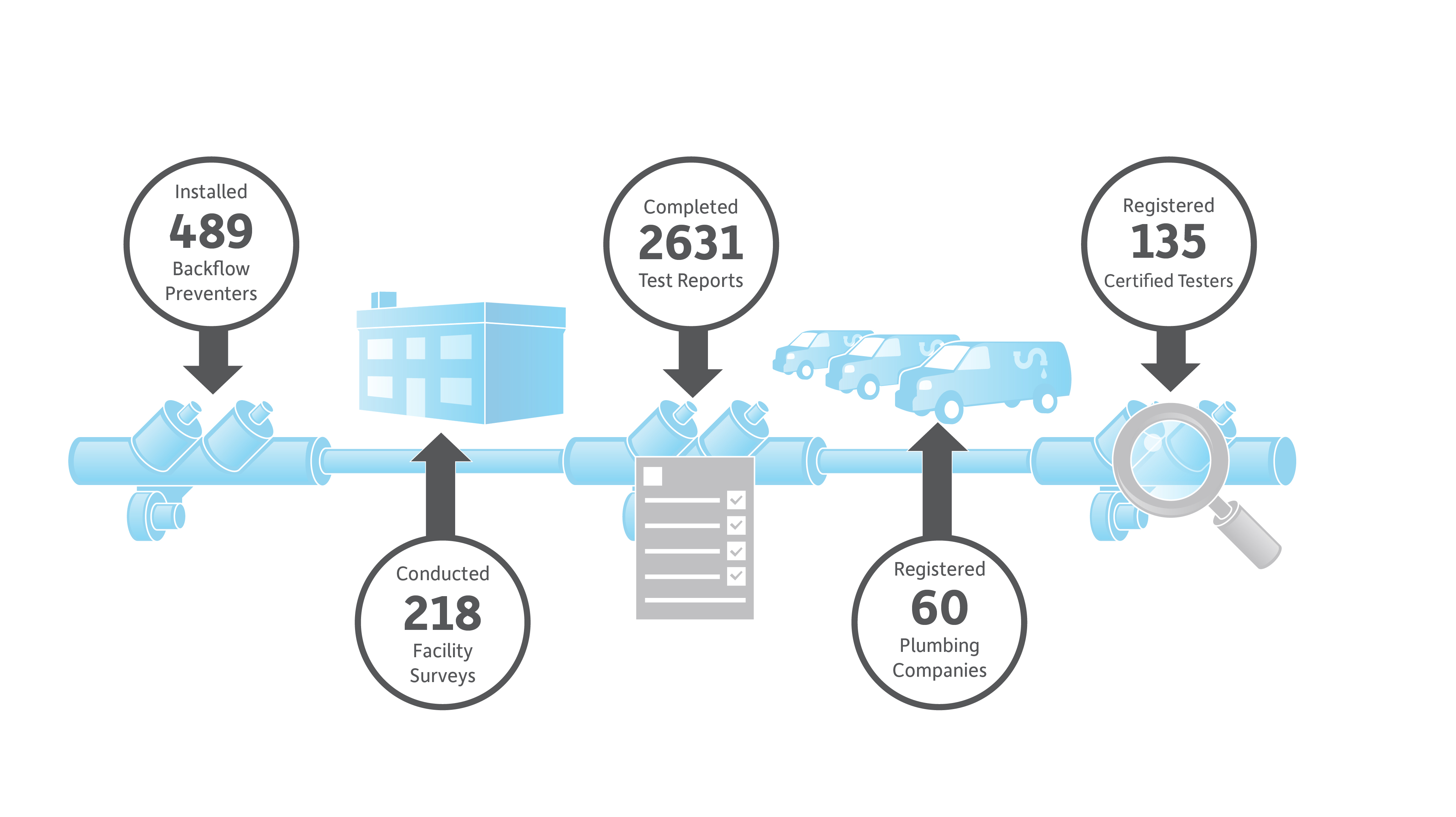 Click to enlarge
Click to enlarge
21
Homes and Businesses
had their Drinking Water
Tested for Lead
This meets our regulated requirement of
20 tests
Community Lead Testing Volunteers
Help safeguard our water, from source to tap
Protecting our drinking water is a shared responsibility. Thank you to our customers who volunteer in the community lead testing program and help keep drinking water safe and clean.
Under the Provincial Regulation 170/03 (Safe Drinking Water Act), the Ministry of the Environment and Climate Change requires owners of municipal residential drinking water systems to conduct lead testing of water taken from both plumbing (pipes inside the home or building) and distribution locations (pipes leading to the home or building). The municipality has been regulated to conduct lead testing over the past decade. During this time, Utilities Kingston has typically not found any issues with elevated lead levels in drinking water.
Full Scope Accreditation
In 2017, the required internal auditing process was completed with no non-conformances identified.
In 2011, we received full scope accreditation for a successful Drinking Water Quality Management System (DWQMS). The issuance of the certificates of accreditation is the final step in meeting the initial requirements of the Safe Drinking Water Act. The accreditation process is ongoing and requires yearly audits that demonstrate continuous diligence in continuous improvement in water treatment and supply.
This accreditation demonstrates that Kingston’s water treatment and distribution systems meet the requirements set out in provincial quality water management legislation. It is a testament to our commitment to water quality and the provision of safe and reliable water to our customers.
Annual Inspections
In 2017, the Ministry of the Environment and Climate Change completed annual inspections of all the water treatment systems operated by Utilities Kingston. For 2017, we received a 100 per cent rating for meeting the safety, operational, and compliance requirements under Ontario’s drinking water regulations.
Responsible Management of Infrastructure
Water and Wastewater Master Plans
Utilities Kingston is dedicated to the responsible management of infrastructure. That’s why we’ve updated water and wastewater master plans to align with population growth projections. Master plans help us manage upgrades to infrastructure so that we can provide reliable water and wastewater services to our customers for years to come.
In 2015-16, Utilities Kingston and our partner WSP Canada Inc. conducted a study in accordance with the requirements of the Municipal Class Environmental Assessment (Class EA) process. We held two public information centres in 2016 to present stakeholders with the recommendations for infrastructure upgrades over the next 20 years to service future growth in our community. The final reports were delivered in March of 2017.
Water by the Numbers
21.4B
Total Water
Pumped (L)
1.7B from
previous year
38K
Homes and Businesses Served
300 from
previous year
4,000
Microbiological
Samples
120 of regulated requirement
10K
Chemical
Samples
200 of regulated requirement
Financials
Check out our webpage on conservation to learn about our customers’ accomplishments in saving water.
